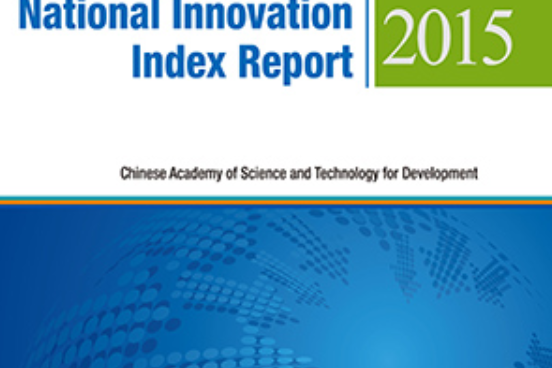內容簡介
Improving indigenous innovation capability and building an innovation-oriented country is a strategic goal set forth in China’s National Program for Medium- and Long-Term Scientific and Technological Development (2006—2020). The Chinese Academy of Science and Technology for Development began working on the national innovation index research in 2006 in order to track and assess China’s progress in building itself into an innovation-oriented country. With the support and assistance from the Ministry of Science and Technology and its related departments and bureaus, related public institutions, and experts from various sectors, the National Innovation Index Report has been published annually since 2011. The National Innovation Index Report 2015 is the sixth release.
As one of the reports of the “national innovation research system” series prepared in accordance with the Work Plan to Establish a National Innovation Research System of the Ministry of Science and Technology, the National Innovation Index Report is a state-level innovation capability assessment report. In line with the overall design of the reporting framework of the national innovation research system, the National Innovation Index Report 2015 does not include assessment of regional and enterprise innovation capabilities as in previous versions, but add the part of country analysis to provide an objective picture of the innovation characteristics of countries through indicator description and data analysis.
The National Innovation Index Report, which draws upon domestic and international theories and methods of assessment of national competitiveness and innovation capability, is based on an indicator matrix comprising five pillars, i.e. innovation resources, knowledge creation, enterprise innovation, innovation performance and innovation environment. This report keeps the indicator system structure of the previous release, which consists of five first-level indicators and 30 second-level indicators. The 30 second-level indicators include 20 quantitative indicators which highlight innovation scale, quality and efficiency and international competitiveness while maintaining a balance between large and small countries, and 10 qualitative indicators which reflect the innovation environment.
This report continues to feature 40 countries with active science, technology and innovation activities (whose combined R&D expenditure accounts for 97% of the world’s total), and continues to use the internationally accepted benchmarking method to calculate the national innovation index. All data are obtained from databases and publications of governments or international organizations and are internationally comparable and authoritative. The report calculates the innovation index scores of the 40 countries based on the statistical and research data of 2013—2014 and compares them with the rankings in the previous release.
In today’s world, a country’s property and sustainable development is mainly dependent on the development and accumulation of its national innovation capability, rather than on the number of population or availability of natural resources. As the world constantly changes, the national innovation capability of countries also changes with their ability to mobilize various elements of innovation. In the face of the opportunities and challenges from science and technology development and the changes of international political and economic situation, countries are increasing investment in resources of science, technology and innovation to strengthen their innovation capability. Against the background of global competition, China moved up to 18th position in the national innovation index rankings in 2014 with a further increased overall index score, further narrowing its gap with advanced countries.
Innovation-driven development has become China’s national strategy. The establishment of the national innovation research system is set to create favorable conditions for improving the innovation assessment indicator system and advancing the capability of monitoring and assessment. It requires continuous exploration and extensive research to assess China’s comprehensive innovation capability, monitor its status of national innovation capability, and analyze the gap with leading innovation-oriented countries. We sincerely hope that the annual national innovation index report willprovide an opportunity for all walks of life to understand and assess China’s innovation capability development. We will continue to draw upon the valuable opinions of experts and scholars to continuously improve the national innovation index as we witness the great historical process of China becoming an innovation-oriented country.
In compiling this report, we received valuable advice and support from many experts and scholars including Lü Yongbo, Liu Yun, Sun Cheng, Li Zhengfeng, Yang Qiquan, Zhao Zheng, Guo Tiecheng and Huang Lucheng, to whom we express our sincere gratitude.
圖書目錄
Part One: China’s Innovation Landscape through Data
I. China’s Innovation Progress Reflected in Key Indicators
(I) Input of Innovation Resources Steadily Increases
(II) Knowledge Output Significantly Increases
(III) Science, Technology and Innovation Contributes Significantly to Economic Growth
II. China’s Innovation Capability in the World
(I) The United States, Japan and Europe Continue to Lead Global Innovation
(II) China’s Innovation Capability Is Significantly Ahead of Its Development Stage
(III) China Leads Developing Countries in Innovation Capability
(IV) China’s Innovation Capability Still Has Considerable Potential for Improvement
III. Assessment of National Innovation Index Indicators
(I) China’s Input of Innovation Resources Steadily Increases
(II) China Makes Significant Progress in Knowledge Creation
(III) China Holds an Upper-middle Position in Enterprise Innovation
(IV) China Remains Stable in Innovation Performance
(V) China’s Innovation Environment Still Leaves Room for Improvement
IV. China’s Innovation Capability Development and Evolution
(I) China’s Evolution in National Innovation Index Performance
(II) Progress in Achieving the Goals in the 12th Five-year S&T Development Plan
Part Two: Country Analysis
Part Three: Assessment Methodology
I. Assessment Approach
II. Indicator Matrix
III. Calculation Methodology
Appendixes
Appendix I Index and Sub-index Scores and Rankings
Appendix II Definitions of Indicators
Appendix III Data Sources

